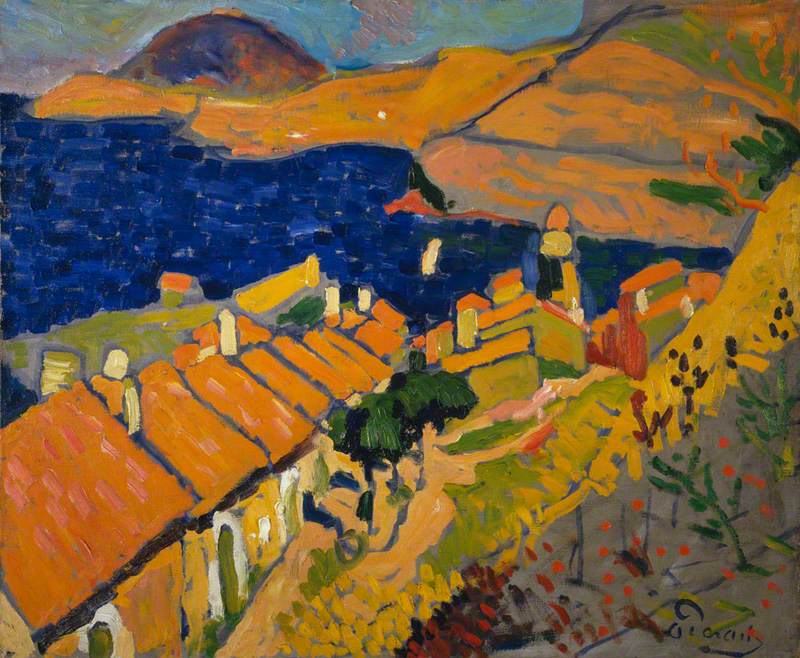New Year savings: six of the best bottles
Author: Mark Pardoe MW

We asked our Wine Director, Mark Pardoe MW, to recommend some of his favourite wines available as part of our New Year savings, which ran until 14th January 2021. His picks range from Collioure to the Côte d’Or and beyond.
Being asked to make a personal selection from the wines offered in our New Year savings is akin to looking at the wine list in a good restaurant. When that was possible, at least. Which are the most interesting wines and those that seem to offer the best price/quality benefit? Of course, the prices are all reduced and so bargains abound, but where will the nuggets be unearthed? With so many options, I offer some personal choices from favourite suppliers.
2018 Château Fontarèche, La Chapelle Mignard Blanc, Corbières, Languedoc
An ancient estate, owned by the same family since 1682, situated halfway between Carcassonne and Béziers, close to the Corbières appellation. The estate is managed and the wines made, as they were by his father, by Vincent Dubernet. As befits its heritage, I always feel that the rather rustic buildings are gently dilapidating, and the winemaking equipment is more functional than modern.
Nevertheless, from these seemingly unpromising resources, Vincent makes delicious, approachable wines. This white is a three-way blend of Colombard, Sauvignon Blanc and, importantly, Vermentino (known here as Rolle). The Rolle is key to giving this elderberry-scented wine a salty minerality, and an interest that exceeds its status.
2017 Gaba do Xil, Mencía, Telmo Rodríguez, Valdeorras, Spain
If you are of the opinion that Spain is the home of the “heavy” red, the Mencía grape variety is here to change your mind. Spain’s north-western regions are open to the cooling influence of the Atlantic, its prevailing winds and accompanying rain and Mencía’s early-maturing, juicy style is well-adapted.
Support this with the mineral-rich soils of Valdeorras and you have something arguably unique: a wine that refreshes yet is spicy, is full in flavour yet delicate with notes of wild herb, tannic yet supple. And now factor in that this example is made by the intrepid, vineyard-trotting Telmo Rodriguez, one of Spain’s most renowned winemakers of his generation, and the package is complete.
2017 St Véran, Climat La Bonnode, La Soufrandière, Bret Brothers, Burgundy
The brothers Bret – Jean-Philippe and Jean-Guillaume – took their vineyards out of the local co-operative in 2000. They haven’t looked back. Immediately, they converted to organic practices and, with their own vineyards, are now fully biodynamic and still pushing the boundaries towards minimum intervention at all stages, especially with the use of SO2.
The brothers are also blessed with wonderful east-facing vineyards on limestone. Their wines are among most expressive and lithe of the region. La Bonnode was added to their range in 2016. This St Véran has beautiful notes of apple blossom and ripe pear, lifted by a mineral tang. There are two vintages available in the sale, both in bottles and magnums. All are ready to drink but also good enough to improve to at least 2025.
2017 Collioure, Côté Montagne, Domaine de la Rectorie, Languedoc
In 1949, the enigmatic author Patrick O’Brian moved to Collioure, hard by the border with Spain, and lived there until his death in 2000. All his famous Aubrey-Maturin novels were written in that period. It is tempting to think that the striking azure light and influence of the Mediterranean at Collioure influenced him, just as it did the Fauvist painters Matisse and Derain.
But for all its natural beauty, this is a hard, arid landscape for winemaking, with terraces cut into the hard, red local rock. The key grape here is Grenache, just as it is for the local fortified wine Banyuls (for which Domaine de la Rectorie are peerless), and their Montagne blend is from higher vineyards, using also Carignan, Counoise and Mourvèdre. A generous glass of this deep red wine, headily scented with wild thyme and black olive, can transport you south. Perhaps enjoy it alongside a view of Matisse’s Les Toits De Collioure, or Derain’s Collioure.

Copyright:© ADAGP, Paris and DACS, London 2018
2017 Meursault, Clos de la Velle, Olivier Leflaive, Burgundy
Franck Grux has been the winemaker here since 1988, having first cut his teeth at Domaine Roulot. Thirty years later, his enthusiasm is still undimmed – despite now managing a range across more than 80 cuvées and 120 hectares. We always taste the range with him squeezed into the corner of the winery across a few up-ended barrels.
Being an honest soul, Franck doesn’t hold back on his favourites. Clos de la Velle is one of them, a new acquisition for Leflaive in 2016. This is a walled section of the Sous la Velle vineyard, below the old château. Here the soil is heavier, so there is plenty of Meursault’s famous creaminess. But this is held in check by a proportion of the vineyard planted in 1956. These old vines add spice and detail. The richness evolves into a finale of toasted brioche. Behind his heavy glasses, Franck’s eyes are smiling.
2017 Pommard, Les Perrières, Domaine Sébastien Magnien, Burgundy
Sébastien Magnien has a small but perfectly formed domaine. Eschewing almost entirely anything Premier Cru or above, he and his forebears have concentrated on spotting potentially high-quality plots of land that abut more regarded sites. He has a small amount of Beaune Premier Cru, but then almost everything in Beaune is Premier Cru.
Just so with Sébastien’s Pommard Les Perrières. The map shows its position on the eastern side of the D973, which runs up to Pommard, but it is that road that divides Les Perrières from Les Petits Epenots, a vineyard that is a genuine contender for elevation to Grand Cru in years to come. And with global warming, these “lesser” sites like Les Perrières are making increasingly interesting wines. My note from tasting this wine from barrel with Sébastian in his cellar on 18th November 2018 simply says: “an assertive, classic Pommard nose….and a little explosion of sweet ripe fruit”. It’s a gem.


